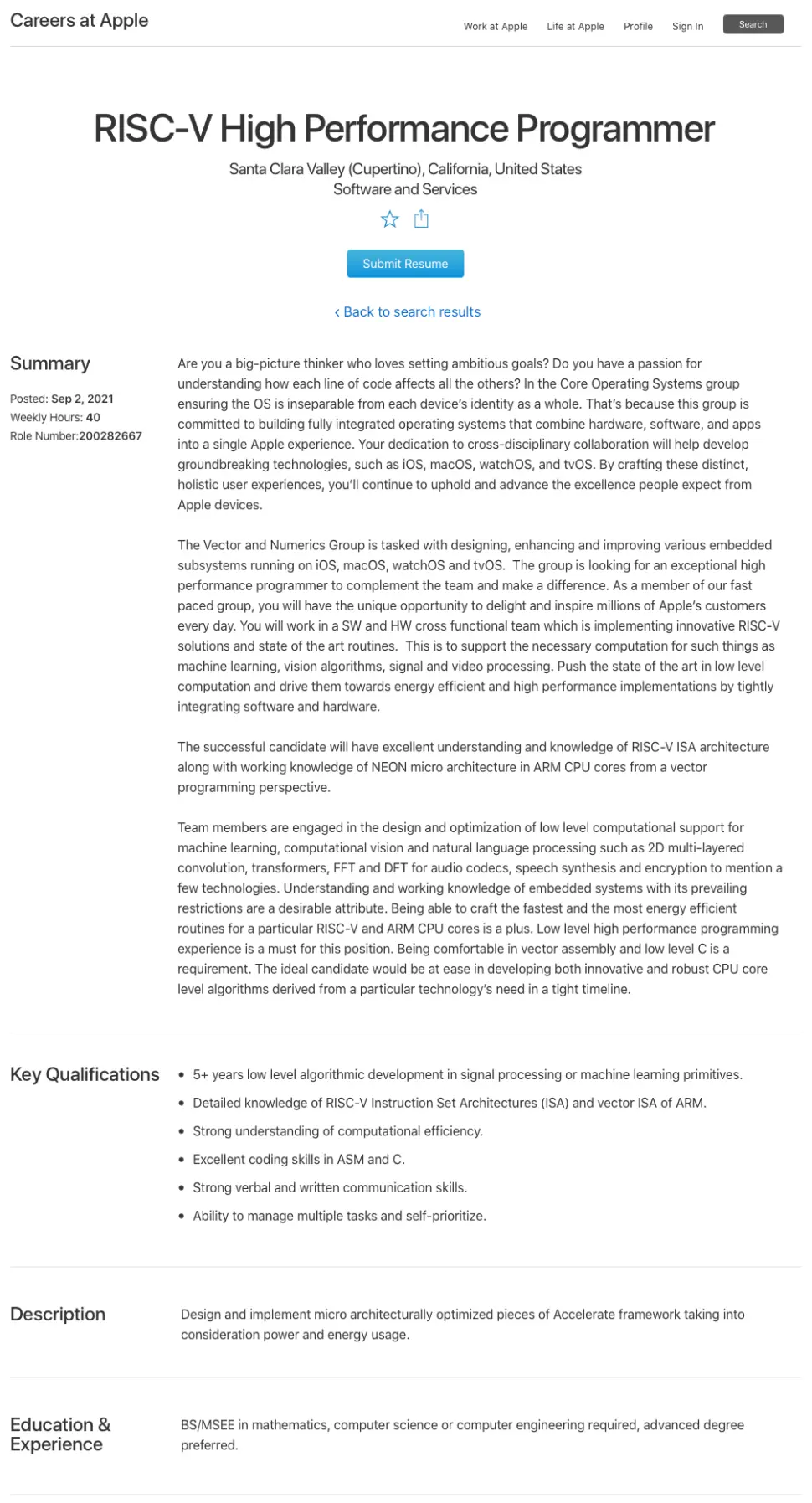Apple has recently made an announcement for RISV developers.

Apple is currently seeking developers with detailed knowledge of and experience with the RISC-V instruction set architecture (ISA) and ARM’s Neon vector ISA for the Vector and Numerics Group (VaNG) group within its core operating systems team, the job announcement states. Apple’s VaNG group is responsible for developing and improving various embedded subsystems running on iOS, macOS, watchOS and tvOS.
Apple, which is known for its secrecy, did not reveal in the job posting what it intends to do with RISC-V, but the job description indicates that the developer in this role will need to be responsible for machine learning, computational vision and natural language processing. Among other things, experience with high-performance programming for underlying development is required. In addition, the job description indicates that Apple is already using RISC-V.
According to the job announcement, the employee in this position will work in a team across software and hardware that is implementing innovative RISC-V solutions and state-of-the-art routines (routines). This is to support the necessary computing in machine learning, vision algorithms, signal and video processing and more. By tightly integrating software and hardware, the state of the art in underlying computing is pushed and they are driven to achieve high power efficiency and performance.
Many of Apple’s products now use custom System-on-Chips (SoCs) that use highly customized ARM cores. Apple pays an annual licence fee to Arm for these cores. It is therefore thought that as Apple uses ARM cores in more and more of its devices, it will pay more and more to Arm. Therefore, replacing some of the Arm cores with RISC-V cores could save Apple millions of dollars a year in royalties, just as Western Digital did years ago with RISC-V cores for its low-power solutions.
However, if Apple wants to integrate custom RISC-V cores into its ecosystem, then it will inevitably need to have a software stack ready for it and ensure that everything works correctly. This is where developers familiar with RISC-V and ARM vector architectures come into play.
Given that Apple is already working on RISC-V solutions, it may only be a matter of time before it replaces some types of kernel with RISC-V. Of course, it remains to be seen how far Apple is willing to go in its RISC-V plans.